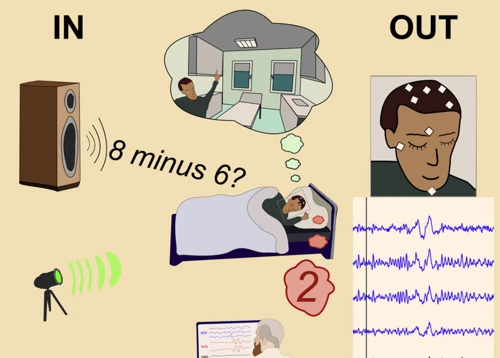Many of us have experienced the peculiar phenomenon of dreaming, where our minds conjure up vivid, often surreal scenarios while we sleep. But have you ever had a dream where you were not only aware of the fact that you were dreaming, but also had the ability to control the events within that dream? This extraordinary experience is known as lucid dreaming. Lucid dreaming has fascinated scientists, psychologists, and spiritualists alike for centuries, prompting them to delve into the depths of our subconscious minds to unravel the secrets behind this enigmatic phenomenon. In this article, we will explore the science behind lucid dreaming, uncovering the neurological processes, the different stages of sleep, and the various techniques that can induce and enhance lucid dreaming. So, buckle up as we embark on a captivating journey into the realm of lucid dreaming, where the line between reality and fantasy becomes blurred, and the possibilities are limited only by our imagination.
What is Lucid Dreaming?
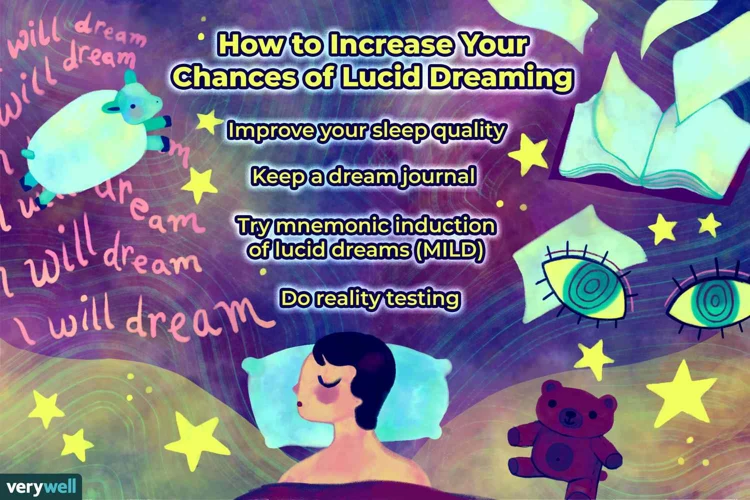
Lucid dreaming is a fascinating phenomenon where an individual becomes aware that they are dreaming while still immersed in the dream itself. It is a state where the dreamer maintains consciousness and can actively participate in and manipulate the dream environment. During a lucid dream, one can have a heightened sense of control, making decisions and engaging in activities that would not be possible in waking life.
In a lucid dream, the dreamer can shape the dream narrative, fly through fantastical landscapes, interact with dream characters, and even explore the depths of their own subconscious. The level of control experienced in a lucid dream can range from simply being aware that one is dreaming to actively influencing and altering the dream’s course.
One of the main distinguishing factors of lucid dreaming is the presence of self-awareness within the dream state. This self-awareness allows the dreamer to question the reality of their surroundings and recognize the dream as a construct of their own mind. This awareness can be achieved through various triggers such as critical reflection, reality testing, or simply through practice and intention.
Lucid dreaming can occur during any stage of sleep, although it is more commonly reported during the rapid eye movement (REM) stage. REM sleep is a stage of sleep characterized by heightened brain activity, rapid eye movements, and vivid dreaming. It is during this stage that the majority of our dreams occur, making it a prime time for lucid dreaming to take place.
People have reported experiencing lucid dreams for centuries, with ancient texts and cultures making references to this extraordinary phenomenon. In recent years, lucid dreaming has garnered scientific interest, with researchers exploring the underlying neurological processes and potential applications of lucid dreaming in various fields, such as therapy, creative problem-solving, and personal development.
Now that we have a glimpse into the intriguing world of lucid dreaming, let us delve deeper into the stages of sleep and the science behind this remarkable phenomenon. But before we do so, if you’re curious about how lucid dreaming can be used as a therapeutic practice or for self-discovery and personal growth, you can check out the following articles: /lucid-dreaming-therapeutic-practice/, /harnessing-lucid-dreaming-self-discovery-growth/, and /lucid-dreaming-and-problem-solving/.
The Stages of Sleep
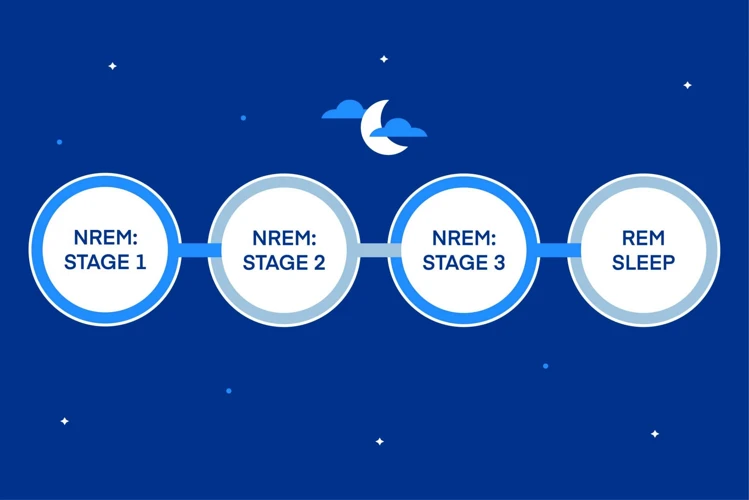
The process of sleep is complex and consists of several distinct stages that repeat throughout the night in a cyclical pattern. The two main categories of sleep stages are Non-REM (NREM) and REM sleep. Non-REM sleep can be further divided into three stages: N1, N2, and N3. N1 represents the transition from wakefulness to sleep, characterized by light sleep and theta brainwave activity. N2 is a deeper stage of sleep where brain activity slows down, and sleep spindles and K-complexes occur. Finally, N3, also known as slow-wave sleep, is the deepest stage of NREM sleep, where delta brainwaves dominate. REM sleep, on the other hand, is the stage where vivid dreaming occurs, characterized by rapid eye movements and increased brain activity. During REM sleep, muscles are typically relaxed, which prevents physical enactment of dreams. The sleep cycle progresses through these stages multiple times throughout the night, with REM sleep periods becoming longer and more frequent as the night progresses.
Non-REM Sleep
Non-REM (NREM) sleep, also known as quiet sleep, refers to the stages of sleep during which our brain activity and physiological functions are relatively stable. It is typically divided into three distinct stages: NREM-1, NREM-2, and NREM-3.
NREM-1 is the transitional stage between wakefulness and sleep. During this stage, brain activity begins to slow down, and we may experience fleeting, dream-like images or hallucinations. This stage only lasts for a few minutes, and if awakened from NREM-1 sleep, we may not even realize we were asleep.
NREM-2 is a significant portion of our sleep cycle, accounting for about 50% of the total sleep time in adults. This stage is characterized by a further decrease in brain activity, along with the appearance of sleep spindles and K-complexes on an electroencephalogram (EEG) reading. Sleep spindles are brief bursts of brain waves, while K-complexes are sharp waveforms that help maintain sleep stability and protect against external disturbances.
NREM-3, also known as slow-wave sleep or deep sleep, is the stage associated with restorative and rejuvenating effects on the body. It is characterized by an even slower brain activity, with the appearance of large, slow waves on the EEG. During this stage, our heart rate and breathing slow down, and our muscles relax. NREM-3 sleep is crucial for physical recovery, growth, and repair.
It is important to note that lucid dreaming is more commonly reported to occur during the REM stage of sleep rather than during NREM sleep. However, understanding the stages of sleep, including NREM sleep, provides us with a broader context for the occurrence of lucid dreaming and the various techniques used to induce it.
Now that we have explored the stages of sleep, let us delve into the fascinating science behind lucid dreaming, including the neurological basis and the role of specific brain processes.
REM Sleep
REM sleep, also known as Rapid Eye Movement sleep, is a stage of sleep characterized by vivid dreaming, rapid eye movements, and increased brain activity. It is one of the two main stages of sleep, the other being Non-REM sleep. During REM sleep, our brains become highly active, even surpassing the levels of activity seen during wakefulness. Let’s explore the fascinating characteristics of REM sleep:
1. Vivid Dreaming: REM sleep is closely associated with dreaming. Dreams experienced during this stage are often vivid, immersive, and filled with complex narratives. The content of these dreams can range from mundane events to fantastical scenarios, reflecting the vast creative capabilities of the dreaming mind.
2. Rapid Eye Movements: As the name suggests, REM sleep is characterized by rapid eye movements. These eye movements correspond to the dream imagery the individual is experiencing. However, it’s important to note that not all dreaming occurs during REM sleep, and not all REM sleep is accompanied by noticeable eye movements.
3. Increased Brain Activity: The brain exhibits heightened activity during REM sleep, particularly in areas associated with emotion, memory consolidation, and visual processing. This increased brain activity is thought to be responsible for the immersive and realistic nature of dreams during this stage.
4. Paralysis: Interestingly, REM sleep is also accompanied by a state of muscle paralysis known as REM atonia. This temporary loss of muscle tone prevents individuals from physically acting out their dreams, ensuring the safety and integration of the dream experience with the sleeping body.
5. Sleep Cycles: REM sleep occurs in cycles throughout the night, alternating with Non-REM sleep. These cycles typically last for about 90-120 minutes, with REM sleep becoming longer and more pronounced as the night progresses. It is during the final REM sleep cycle that dreams are often most vivid and memorable.
Understanding the characteristics of REM sleep is crucial when exploring the science behind lucid dreaming. Lucid dreaming is more likely to occur during REM sleep due to the heightened brain activity and vivid dreaming experienced during this stage. Now that we have unraveled the intriguing nature of REM sleep, let’s move on to explore the neurological basis of lucid dreaming.
The Science of Lucid Dreaming
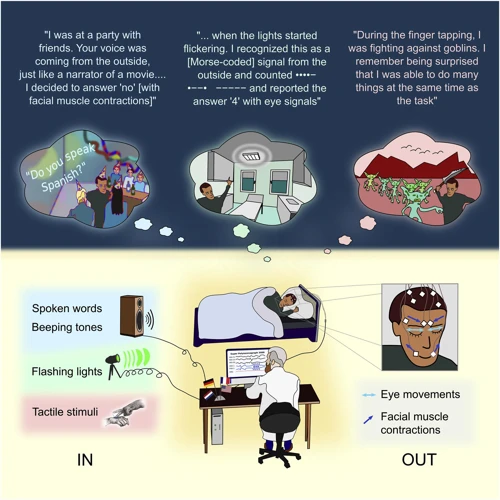
The science of lucid dreaming seeks to unravel the intricate workings of the brain during this extraordinary phenomenon. Neurologically, lucid dreaming is believed to involve the activation of the prefrontal cortex, the part of the brain responsible for decision-making, self-awareness, and higher cognitive functions. Studies have shown that during lucid dreaming, there is increased activity in this region, suggesting that it plays a crucial role in maintaining self-awareness and control within the dream state. Additionally, neurotransmitters like dopamine and acetylcholine are thought to play a significant role in lucid dreaming. Dopamine is associated with reward and motivation, and its presence in the brain during lucid dreaming may contribute to the sense of pleasure and excitement experienced. Acetylcholine, on the other hand, is involved in memory formation and is believed to enhance conscious awareness during dreams. Understanding the neural mechanisms and chemical processes behind lucid dreaming is essential for further research and opens up possibilities for exploring its potential applications in various fields.
Neurological Basis
The neurological basis of lucid dreaming lies in the intricate workings of the brain during sleep. While the exact mechanisms are not yet fully understood, researchers have made significant strides in unraveling this mysterious phenomenon.
Studies using modern neuroimaging techniques, such as functional magnetic resonance imaging (fMRI) and electroencephalography (EEG), have provided valuable insights into the brain activity associated with lucid dreaming. These studies have shown that during lucid dreaming, certain areas of the brain, particularly the prefrontal cortex, exhibit heightened activation.
The prefrontal cortex, located at the front of the brain, plays a crucial role in executive functions, such as self-awareness, decision-making, and working memory. It is involved in cognitive processes that are essential for lucid dreaming, such as the ability to reflect upon and question one’s own reality. Researchers have found increased activity in the prefrontal cortex during lucid dreaming, suggesting that this region may be responsible for the metacognitive abilities observed in lucid dreamers.
Studies have shown a correlation between the level of prefrontal cortex activation and the degree of lucidity experienced during a dream. Higher activation in this region is associated with increased lucidity, indicating that the prefrontal cortex may play a pivotal role in maintaining self-awareness while dreaming.
Another key component in the neurological basis of lucid dreaming is the modulation of neurotransmitters, specifically dopamine and acetylcholine. Dopamine is a neurotransmitter involved in reward processing, motivation, and learning. Research suggests that an increase in dopamine levels during sleep may contribute to the occurrence of lucid dreaming.
Acetylcholine, on the other hand, is responsible for regulating cognitive functions and promoting wakefulness. During REM sleep, when most dreaming occurs, acetylcholine levels are elevated. Studies have shown that the interaction between dopamine and acetylcholine receptors in the brain may influence the likelihood of experiencing lucid dreams.
Understanding the neurological basis of lucid dreaming provides valuable insights into the mechanisms underlying this intriguing phenomenon. By unraveling the brain processes involved, researchers can develop a deeper understanding of consciousness, self-awareness, and the boundaries between waking reality and the dream world. As we continue to explore the science behind lucid dreaming, we gain a greater appreciation for the complex interplay between our brain, mind, and the realm of dreams.
Activation of Prefrontal Cortex
The activation of the prefrontal cortex plays a crucial role in the experience of lucid dreaming. This area of the brain, located at the front of the frontal lobe, is responsible for higher-order cognitive functions such as decision-making, self-awareness, and working memory. During a lucid dream, the prefrontal cortex becomes active, allowing the dreamer to maintain consciousness and engage in metacognitive processes.
Research has shown that the prefrontal cortex is involved in monitoring and reflecting upon one’s own thoughts, actions, and experiences. In the context of lucid dreaming, the activation of the prefrontal cortex enables individuals to recognize the dream state and differentiate it from waking reality. This self-reflective awareness is what sets lucid dreaming apart from regular dreaming.
Studies using neuroimaging techniques have provided insight into the specific brain activity associated with lucid dreaming. One such study conducted by German researchers used functional magnetic resonance imaging (fMRI) to compare the brain activity of participants in lucid dreaming versus non-lucid dreaming states. The findings revealed increased activation in the prefrontal cortex during lucid dreaming, indicating the involvement of this brain region in maintaining self-awareness and conscious control within the dream.
There are also theories suggesting that the activation of the prefrontal cortex during lucid dreaming is linked to the creation and manipulation of the dream environment. The prefrontal cortex is known to be involved in imagination, creative thinking, and mental imagery. When activated during a lucid dream, it allows individuals to conjure up specific scenarios, objects, or characters, and even modify the dream narrative according to their desires.
It is worth noting that the activation of the prefrontal cortex in lucid dreaming appears to closely resemble the pattern of activity observed during waking consciousness. This overlap in brain activity further highlights the intriguing nature of lucid dreaming, blurring the line between the dream world and waking reality.
Understanding the role of the prefrontal cortex in lucid dreaming not only contributes to our understanding of the science behind this phenomenon but also opens up possibilities for further research and potential applications. By gaining insights into the neural mechanisms underlying lucid dreaming, scientists can explore ways to enhance the lucidity and control experienced during dreams, leading to advancements in areas such as virtual reality, therapeutic interventions, and personal development techniques.
The Role of Dopamine and Acetylcholine
The role of neurotransmitters in the brain plays a crucial part in the occurrence of lucid dreaming. Two neurotransmitters, dopamine and acetylcholine, have been found to be particularly influential in facilitating the experience of lucid dreaming.
Dopamine:
Dopamine is a neurotransmitter associated with motivation, reward, and pleasure. It is involved in various brain functions, including mood regulation and sleep-wake cycles. Studies have suggested that an increase in dopamine levels may contribute to the onset of lucid dreaming. Dopamine influences the prefrontal cortex, the region responsible for higher cognitive functions such as decision-making and self-awareness. Elevated dopamine levels can enhance the activation of the prefrontal cortex during REM sleep, promoting self-awareness and lucidity within dreams.
Acetylcholine:
Acetylcholine is another neurotransmitter that plays a crucial role in sleep and dreaming. It is involved in the activation of the brain during REM sleep and is believed to be responsible for the vivid and often bizarre nature of dreams. Acetylcholine levels are typically high during REM sleep, which is when most dreaming occurs. This neurotransmitter enhances brain activity and is thought to be essential for memory formation and learning processes within the dream state. Increased acetylcholine levels in the brain during REM sleep have been associated with lucid dreaming, as it promotes a higher level of awareness and cognitive functioning while dreaming.
The intricate interplay between dopamine and acetylcholine during REM sleep is thought to be a key factor in the occurrence of lucid dreams. The presence of these neurotransmitters creates an optimal environment for heightened self-awareness, cognitive abilities, and control within the dream state. While more research is needed to fully understand the mechanisms behind the role of dopamine and acetylcholine in lucid dreaming, their influence on brain activity and dream experiences is undeniable.
In the next section, we will explore different techniques that can be used to induce and enhance lucid dreaming, allowing individuals to actively engage in and explore their dream worlds.
How to Induce Lucid Dreaming

There are several techniques that individuals can employ to induce lucid dreaming and increase their chances of experiencing this extraordinary phenomenon. One effective method is reality testing, which involves regularly questioning the environment to determine if one is dreaming or awake. This can include performing reality checks throughout the day, such as looking at a digital clock and then looking away and back to see if the numbers change. Another technique is the Mnemonic Induction of Lucid Dreams (MILD) which involves setting the intention to have a lucid dream before falling asleep and repeating a mantra or affirmation related to lucidity. The Wake-Back-to-Bed Technique (WBTB) involves waking up during the night after a few hours of sleep, staying awake for a short period of time, and then going back to sleep with the intention of entering a lucid dream. These techniques, combined with patience, practice, and a consistent sleep routine, can greatly enhance the likelihood of experiencing lucid dreams.
Reality Testing
Reality testing is a widely practiced technique that aims to induce lucid dreaming by cultivating a habit of questioning the reality of our waking and dreaming experiences. The idea behind reality testing is to develop a critical mindset and increase self-awareness in order to recognize the dream state when it occurs. By regularly questioning our surroundings and performing reality checks, we can train our minds to carry this habit into our dreams, leading to increased chances of becoming lucid.
There are several techniques for reality testing, and individuals can choose the ones that resonate with them. One common method is to periodically ask yourself throughout the day, “Am I dreaming?” This simple question serves as a reminder to stay aware and present, prompting you to question your reality and assess your surroundings. Another approach is to perform reality checks, which involve specific actions or observations that help distinguish between dreams and reality.
Some popular reality checks include:
1. Hand Reality Check: Examine your hands in your waking life and consciously take note of their appearance. During a dream, your hands may appear distorted, have extra fingers, or exhibit other abnormalities. By regularly checking your hands throughout the day, you may start to do the same in your dreams, triggering lucidity.
2. Light Switch Reality Check: In both dreams and reality, the behavior of light switches can be unreliable. In a dream, flipping a light switch may not result in a change in lighting, or the light may not work at all. By habitually checking the behavior of light switches, you can condition yourself to perform the same action during a dream, potentially leading to lucidity.
3. Text Reality Check: In dreams, text often tends to change, become blurry, or appear nonsensical upon re-reading. Reality testing with text involves double-checking written material, such as signs, books, or digital displays, to see if it remains consistent. Consistently performing this check will increase the likelihood of carrying out the same action while dreaming.
Remember, the key to effective reality testing is to perform these checks consistently and with mindful attention. By integrating reality testing into your daily routine, you will develop a habit that can spill over into your dream world, increasing your chances of experiencing lucid dreaming.
Mnemonic Induction of Lucid Dreams (MILD)
Mnemonic Induction of Lucid Dreams (MILD) is a technique that aims to induce lucid dreaming by enhancing dream recall and increasing the chances of becoming lucid within a dream. Developed by renowned dream researcher Stephen LaBerge, MILD is based on the principle of prospective memory – the ability to remember and execute an intended action in the future.
Here’s how the MILD technique works:
1. Reality Testing: The first step in MILD involves incorporating reality testing into your daily routine. Throughout the day, perform reality checks to determine whether you are dreaming or awake. This could include asking yourself, “Am I dreaming right now?” or attempting to read the text on a sign or clock. By regularly practicing reality testing, you are conditioning your mind to question reality, increasing the likelihood of doing the same within a dream.
2. Bedtime Intentions: Before going to bed, set a strong intention to become lucid within your dreams. Repeat to yourself, both in your mind and out loud, “Tonight, I will have a lucid dream.” Visualize yourself becoming aware within a dream and engaging in lucid activities. This intention-setting helps to program your subconscious mind and directs your focus towards achieving lucidity during sleep.
3. Dream Recall: Upon waking up from a dream, make an effort to recall as many details as possible. Keep a dream journal by your bedside and write down the dream immediately upon awakening. The act of writing down your dreams helps to reinforce the habit of dream recall, making it easier to recognize dream patterns and inconsistencies in the future.
4. MILD Technique: After waking up from a dream, focus your mind on the dream you just had. Mentally rehearse the dream, particularly any dream signs or specific elements that may indicate you are dreaming. As you do this, repeat your chosen affirmation or mantra, such as “Next time I’m dreaming, I will recognize I’m dreaming.” Visualize yourself becoming lucid within the dream you just recalled, and truly believe in your ability to achieve lucidity.
5. Back to Sleep: Once you have completed the mental rehearsal and affirmation, go back to sleep with the intention of recognizing and becoming aware within your future dreams. Maintain a relaxed state of mind and let go of any expectations or anxieties.
By combining reality testing, bedtime intentions, dream recall, and the MILD technique, you can significantly increase your chances of experiencing lucid dreams. Consistency and practice are key in mastering this technique, as it may take time for your mind to internalize the process and incorporate it into your dreaming routine.
Remember, the MILD technique is just one of many approaches to induce lucid dreaming. Exploring different methods and finding what works best for you is an exciting journey that can lead to a world of boundless possibilities within your dreams.
Wake-Back-to-Bed Technique (WBTB)
The Wake-Back-to-Bed Technique (WBTB) is a popular method used to induce lucid dreaming by strategically interrupting and re-entering the sleep cycle. This technique capitalizes on the fact that REM sleep, the stage in which dreaming is most likely to occur, becomes more frequent as the night progresses. The WBTB technique involves waking up from sleep and staying awake for a short period before returning to bed with the intention of experiencing a lucid dream.
Here’s how the WBTB technique works:
1. Set an alarm: Set an alarm to wake you up after approximately 4-6 hours of sleep. This timing is crucial as it usually coincides with the later stages of the sleep cycle when REM sleep becomes more prominent.
2. Wake up and stay awake: When the alarm goes off, get out of bed and engage in quiet, calming activities that promote wakefulness and alertness, such as reading a book, meditating, or writing in a dream journal. Avoid bright lights or stimulating electronic devices, as they can interfere with the sleep-inducing hormone melatonin.
3. Focus on lucid dreaming: During the period you’re awake, reinforce your intention to have a lucid dream. You can visualize yourself becoming aware within a dream, repeat affirmations like “I will be lucid in my dreams,” or review dream signs and reality-check techniques to enhance your awareness.
4. Return to bed: After 20-60 minutes of wakefulness, return to bed with the intention of entering a lucid dream. It is advised to perform relaxation techniques, such as deep breathing or progressive muscle relaxation, to ease back into sleep without becoming too alert or stimulated.
5. Maintain awareness: As you drift back into sleep, it’s important to maintain a level of consciousness or awareness. You can do this by visualizing a dream scenario, reminding yourself that you’re about to enter a dream, or focusing on any hypnagogic imagery or sensations that may arise during the transition to sleep.
6. Experience lucid dreaming: With practice and perseverance, the WBTB technique can increase the likelihood of having a lucid dream. Once you become aware that you are dreaming, you can begin to explore and manipulate the dream environment to your liking.
It’s worth mentioning that the WBTB technique may disrupt your sleep pattern and can cause grogginess upon waking in the middle of the night. However, many individuals find this temporary inconvenience worthwhile due to the potential for more frequent and vivid lucid dreaming experiences.
Employing the Wake-Back-to-Bed Technique (WBTB) can be a powerful method to enhance your lucid dreaming abilities. However, it’s important to remember that every individual’s response to this technique may vary. Experimenting with different approaches and finding a routine that works best for you can greatly increase your chances of achieving lucidity during your dreams.
Benefits of Lucid Dreaming
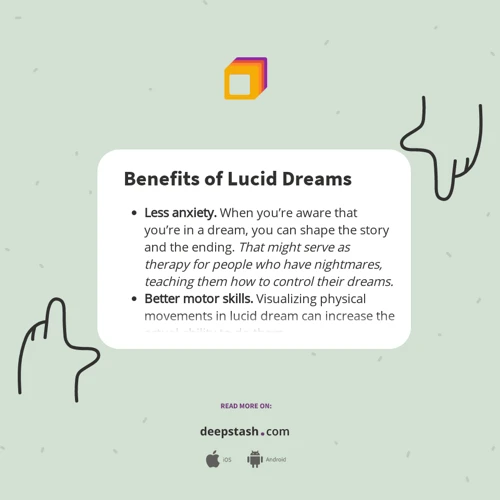
Lucid dreaming offers a range of potential benefits that can enhance our waking lives and provide unique experiences. Here are some of the notable benefits of lucid dreaming:
1. Personal Exploration and Creativity: Lucid dreaming allows individuals to explore and interact with their subconscious minds, unlocking a gateway to creativity and self-discovery. It provides an opportunity to confront fears, delve into unresolved emotions, and gain insights into one’s own psyche.
2. Empowerment and Control: Being aware and in control within a dream can foster a sense of empowerment and self-confidence. It allows individuals to overcome limitations and experience a heightened sense of agency as they actively shape and direct their dream experiences.
3. Enhanced Problem Solving: Lucid dreaming can serve as a platform for problem-solving and decision-making practice. By consciously setting intentions and exploring different scenarios within dreams, individuals can gain new perspectives, insights, and creative solutions to real-life challenges.
4. Skill Development: Lucid dreaming has the potential to improve physical and mental skills by providing a platform for practice and simulation. Athletes can visualize and refine their techniques, musicians can practice playing instruments, and artists can explore and experiment with creative ideas.
5. Emotional Healing: Lucid dreaming can be a tool for emotional healing, as individuals can directly confront and process traumatic or difficult experiences within the safety of the dream environment. This can promote emotional growth, resilience, and personal healing.
6. Rehearsal and Preparation: Lucid dreaming can be used as a platform for rehearsal and preparation for real-life events. For example, public speakers can practice their presentations, students can mentally review information before exams, or individuals can navigate challenging social situations.
7. Recreation and Adventure: Lucid dreams offer the opportunity to engage in exciting, impossible, and fantastical adventures. People can indulge in activities like flying, exploring dream worlds, or meeting their favorite fictional characters, providing a sense of joy, awe, and escapism.
8. Spiritual and Metaphysical Exploration: For those inclined towards spirituality and metaphysics, lucid dreaming can provide a deeper connection to the subconscious and spiritual realms. It can be a means of accessing inner wisdom, exploring metaphysical concepts, and having profound spiritual experiences.
It is important to note that the extent of these benefits may vary from individual to individual and require practice and dedication to achieve. Lucid dreaming can be a powerful tool for personal growth, creativity, and self-exploration, offering a world of possibilities that stretch beyond the boundaries of waking reality.
Lucid Dreaming vs. Sleep Paralysis
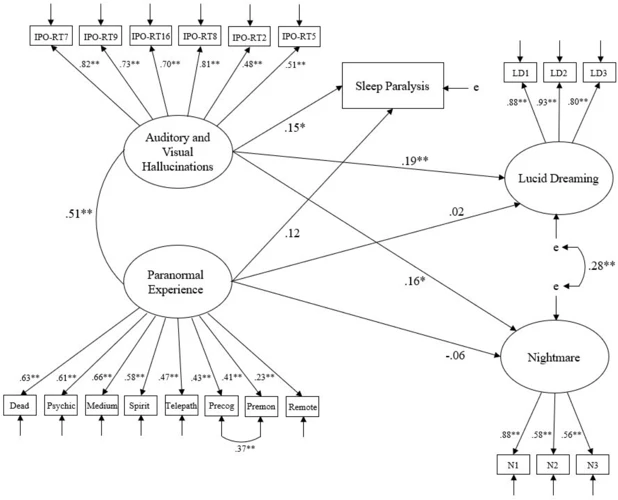
Lucid dreaming and sleep paralysis are two intriguing phenomena that can occur during sleep, but they are distinct experiences with different characteristics. While lucid dreaming involves being aware and in control within a dream, sleep paralysis is a state of temporary muscle paralysis that occurs upon waking up or falling asleep.
Lucid Dreaming:
– In lucid dreaming, the dreamer is conscious and aware that they are dreaming.
– The dreamer can actively engage with and manipulate the dream environment.
– Lucid dreams often occur during the rapid eye movement (REM) stage of sleep, which is characterized by vivid dreaming.
– Techniques such as reality testing, mnemonic induction of lucid dreams (MILD), and the wake-back-to-bed technique (WBTB) can be used to induce lucid dreams.
– Lucid dreaming can have various benefits, such as creativity enhancement, problem-solving practice, and personal growth.
Sleep Paralysis:
– Sleep paralysis is a state of temporary muscle weakness or paralysis that occurs during the transition between sleep and wakefulness.
– It can happen when falling asleep (hypnagogic or predormital sleep paralysis) or upon waking up (hypnopompic or postdormital sleep paralysis).
– During sleep paralysis, individuals may experience a sense of being unable to move or speak despite being fully aware of their surroundings.
– Sleep paralysis is often accompanied by hallucinations, which can be frightening or unsettling.
– It is commonly associated with disrupted sleep patterns, sleep disorders (such as narcolepsy), and high-stress levels.
It is important to differentiate between lucid dreaming and sleep paralysis, as they are unique experiences with distinct characteristics. While lucid dreaming offers the opportunity for conscious exploration within a dream, sleep paralysis can be a temporary and sometimes unsettling state of muscle paralysis. Both phenomena contribute to the fascinating mysteries of the human sleep cycle, but they arise from separate mechanisms and can have different effects on individuals.
Dangers and Risks of Lucid Dreaming

While lucid dreaming can be an exciting and captivating experience, it is important to be aware of the potential dangers and risks associated with this practice. Although rare, some individuals may encounter negative experiences or challenges during lucid dreams that can have an impact on their well-being.
One potential risk of lucid dreaming is sleep disruption. Engaging in intense lucid dreaming practices or becoming too obsessed with lucid dreaming can disrupt regular sleep patterns. This can lead to difficulties in achieving restful sleep or experiencing a proper amount of deep sleep, which is essential for physical and mental rejuvenation.
Another risk is the potential for experiencing sleep paralysis. This is a state where the body is temporarily unable to move or speak upon waking up from a dream. Sleep paralysis can be accompanied by hallucinations and a sense of fear or dread, as the individual may still be partially immersed in the dream world. While sleep paralysis is usually brief and harmless, it can be distressing for those who experience it.
In rare cases, individuals may encounter difficulty distinguishing between dream and reality, leading to confusion and disorientation. This can occur if the boundaries between wakefulness and the dream state become blurred, causing a disruption in reality perception. It is essential to maintain a clear understanding that lucid dreams are a product of the mind and not actual waking experiences.
Individuals with certain mental health conditions, such as psychosis or severe anxiety disorders, may be more susceptible to negative experiences during lucid dreaming. Lucid dreams can amplify existing emotional states, and for those with psychological vulnerabilities, this amplification may result in distressing or unsettling experiences.
Lastly, it is worth noting that personal experiences and interpretations of lucid dreams can differ greatly. What one person finds enjoyable or enlightening in a lucid dream, another may find frightening or overwhelming. It is crucial to approach lucid dreaming with mindfulness and self-awareness, always prioritizing personal well-being and mental health.
To mitigate the potential risks associated with lucid dreaming, it is advisable to practice moderation and maintain a healthy sleep routine. It is also essential to approach lucid dreaming from a positive and informed perspective, seeking guidance from experienced practitioners or professionals in the field if needed.
By understanding and taking precautions against the potential dangers and risks of lucid dreaming, individuals can safely explore and enjoy the incredible world of lucid dreams while safeguarding their overall well-being.
Using Lucid Dreaming for Personal Growth
Using lucid dreaming as a tool for personal growth has gained significant attention in recent years. The ability to explore and interact with the dream world opens up a realm of possibilities for self-discovery, self-improvement, and expanding one’s consciousness. Here are a few ways in which lucid dreaming can be utilized for personal growth:
1. Emotional Healing and Trauma Resolution: Lucid dreaming provides a safe space to confront and process past traumas or unresolved emotions. By revisiting these experiences in a dream state, individuals can gain insights, release repressed emotions, and work towards healing and resolution.
2. Creative Exploration and Problem-Solving: Lucid dreaming can be a powerful tool for enhancing creativity and problem-solving abilities. In the lucid dream state, one can tap into their subconscious mind and access novel ideas, insights, and solutions. Artists, writers, and innovators often use lucid dreaming to generate new concepts or overcome creative blocks.
3. Self-Reflection and Self-Awareness: Lucid dreaming offers a unique opportunity for deep self-reflection and introspection. By actively engaging with the dream environment and dream characters, individuals can gain a deeper understanding of their fears, desires, and thought patterns. This increased self-awareness can translate into personal growth and self-improvement in waking life.
4. Enhancing Skills and Abilities: Lucid dreams can be harnessed as a training ground for improving skills and abilities. Athletes can practice their techniques, musicians can rehearse performances, and language learners can immerse themselves in a dream environment where they can interact with native speakers. The brain treats these dream experiences as real, leading to tangible improvements when engaging in the corresponding activities in waking life.
5. Spiritual Exploration and Transcendence: Many individuals view lucid dreaming as a spiritual practice, a means to explore the depths of consciousness and transcend the limitations of the physical world. Lucid dreaming can be used to connect with higher states of consciousness, explore spiritual realms, and gain profound insights into the nature of reality and the self.
It’s important to note that while lucid dreaming can be a powerful tool for personal growth, it requires practice, patience, and a commitment to self-exploration. Techniques such as reality testing, dream journaling, mindfulness, and meditation can aid in developing lucidity and intention within dreams. So, if you’re seeking personal growth and expanded horizons, consider harnessing the potential of lucid dreaming to unlock new dimensions of your mind and soul.
Conclusion
In conclusion, lucid dreaming is a captivating phenomenon that offers us a glimpse into the vast potential of our subconscious minds. It allows us to become active participants in our dreams, blurring the line between reality and fantasy. Through the exploration of the stages of sleep and the science behind lucid dreaming, we have discovered that it is a neurological process involving the activation of the prefrontal cortex, as well as the influence of neurotransmitters like dopamine and acetylcholine.
Furthermore, we have explored various techniques that can induce and enhance lucid dreaming, such as reality testing, mnemonic induction of lucid dreams (MILD), and the wake-back-to-bed technique (WBTB). These methods provide us with practical tools to cultivate the ability to have lucid dreams and unleash our creativity, problem-solving abilities, and personal growth within the dream state.
While there are many benefits to lucid dreaming, such as the opportunity for adventure and self-exploration, it is important to note that there can be potential risks and dangers associated with it. Sleep paralysis, for example, can sometimes occur when transitioning between sleep stages, leading to temporary paralysis and hallucinations. It is crucial to approach lucid dreaming with caution and be aware of our mental and physical well-being.
Nevertheless, when practiced responsibly, lucid dreaming can be a powerful tool for personal development and self-discovery. By harnessing the ability to control and manipulate our dreams, we can tap into our subconscious desires, fears, and aspirations. This opens up a world of possibilities for personal growth, problem-solving, and even therapeutic practices.
In conclusion, lucid dreaming holds a wealth of untapped potential waiting to be explored and understood. As we continue to unravel the science behind this fascinating phenomenon, we invite you to embark on your own journey of self-discovery through the world of lucid dreaming. So, harness the power of your dreams and let your imagination soar as you venture into the realm where the boundaries of reality are merely illusions.
Frequently Asked Questions
1. Can anyone learn to have lucid dreams?
While some individuals may naturally have more frequent lucid dreams, with practice and techniques, almost anyone can learn to have lucid dreams. It requires dedication, patience, and a willingness to explore your own subconscious mind.
2. Are lucid dreams the same as ordinary dreams?
No, lucid dreams are different from ordinary dreams. In a lucid dream, the dreamer is aware that they are dreaming and can actively participate and influence the dream’s content. Ordinary dreams, on the other hand, are experienced without any self-awareness or control.
3. Are there any risks associated with lucid dreaming?
Lucid dreaming itself is generally considered safe. However, it is important to maintain a healthy sleep schedule and not rely solely on lucid dreaming, as it may disrupt a regular sleep cycle if not practiced responsibly.
4. Can lucid dreaming be used to overcome fears or nightmares?
Yes, lucid dreaming can be a powerful tool for overcoming fears and nightmares. By becoming aware of the dream and controlling the narrative, individuals can confront and overcome their fears in a safe environment.
5. Can lucid dreaming be used for problem-solving?
Yes, lucid dreaming has been explored as a means of problem-solving and creativity enhancement. By immersing oneself in a lucid dream, individuals can tap into their deeper creativity and gain insights into challenging problems.
6. Can lucid dreaming improve sleep quality?
While lucid dreaming itself does not directly improve sleep quality, practicing techniques for lucid dreaming, such as maintaining a dream journal or practicing relaxation methods, can contribute to better sleep hygiene, resulting in improved sleep quality overall.
7. Is lucid dreaming the same as astral projection or out-of-body experiences?
No, lucid dreaming is a distinct phenomenon from astral projection or out-of-body experiences. Lucid dreaming involves becoming aware within a dream, whereas astral projection and out-of-body experiences involve a perceived separation of consciousness from the physical body.
8. Can lucid dreaming be induced using external devices or supplements?
While there are various external devices and supplements that claim to induce lucid dreaming, their effectiveness is still a subject of debate and research. It is generally recommended to focus on natural techniques and practice to cultivate lucid dreaming abilities.
9. Can children experience lucid dreaming?
Yes, children can also experience lucid dreaming. Some children may naturally have lucid dreams, while others can be taught techniques to increase their likelihood of having lucid dreams.
10. Can lucid dreaming be used as a form of therapy?
Lucid dreaming has shown potential as a therapeutic practice. It can be used to explore subconscious emotions and trauma, provide emotional catharsis, and even aid in the treatment of certain psychological disorders. However, it is important to approach lucid dreaming therapy under the guidance of a qualified professional.

